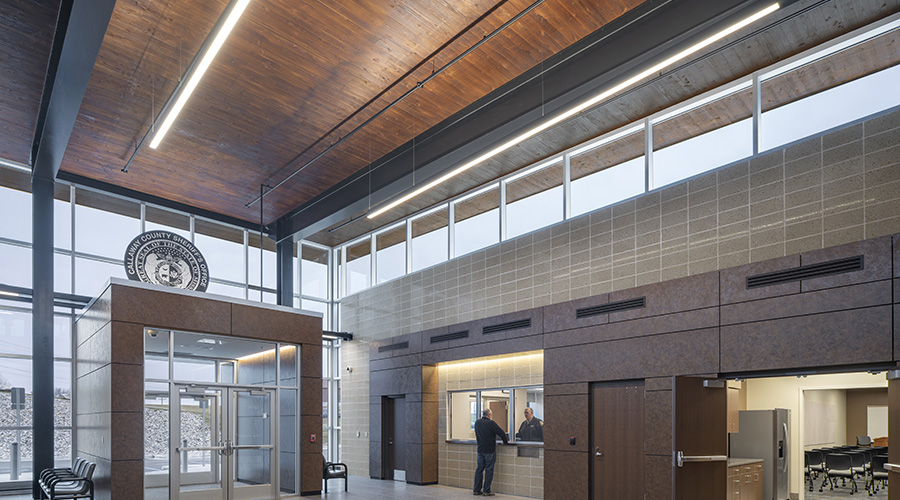Safe and Sound
Effective emergency response plans have to consider people, technology and the building itself
Emergencies happen, pure and simple. Despite all the steps facility executives take to prevent an emergency, it’s impossible to eliminate the chance that one will occur, or to predict when. That’s why emergency response plans are crucial. Developing an emergency plan involves the investment of time and money, but the payoff more than justifies the investment: A plan can prevent loss of life in a crisis.
At the most basic level, an emergency response plan should outline responsibilities in an emergency, points of egress and methods of contacting emergency units. The plan should address every emergency that can be expected to occur in a particular facility so there is basic knowledge on what to do in different situations.
“There needs to be sound knowledge of who the principal players are in an emergency,” says Stevan P. Layne, consultant with Layne Consultants International. “There needs to be someone responsible on every floor for getting people to an exit. There needs to be a focal point for communications, and there needs to be someone who coordinates everything from this point, whether it’s a building manager or someone else.”
Buildings must also be prepared for an emergency. “Clear emergency pathways should be maintained at all times,” says Jeff Harper, engineering manager for RJA. “Minimally, there should be graphics provided throughout the building showing where fire and smoke barriers, fire extinguishers, first-aid kits and exits are.”
It’s important for facility executives to understand the role of technology in emergency response plans. “It’s nice to have an abundance of automated emergency technologies in a facility, but more often than not, they get wiped out in a major emergency situation,” says Layne. “I like to see independent field panels on emergency response systems so that everything works correctly even if main power has been shut down.”
Testing is the best way to make sure technology is working properly. Some systems don’t get updated or checked as often as they should, and that can lead to systems that don’t work properly when they are needed. Some intercom systems in older buildings are not updated as time goes by, so an emergency message could be blurred or fuzzy or just not come across the wire at all. There are products on the market today that are loud and intelligible enough to convey life-saving information.
It helps to have more than one communication system like intercoms, telephones and radios, according to Layne. If one of them is taken out, the facility executive can instantly turn to another. Because radios aren’t wired into the building, they can’t get taken out in an emergency. But since they have to be on the same general frequency and emergency responders cannot contact each other directly, radios are usually the last resort.
Layne predicts communications and emergency systems for many high-rise or high-profile buildings will eventually be handled in an off-site command center that will not be taken out in a crisis.
Although technology plays an important role, it’s really the human element that’s crucial. People have to understand the evacuation plan and be prepared to follow it. Practicing and drilling are key.
“Really, there are only two times to make sure evacuation plans work,” says Paul Timm, vice president of RETA Security, Inc. “One is during the actual emergency, and that is not the time you want to find out if the plan worked or not. The other is through drilling or even tabletop exercises.”
With tabletop exercises, a crisis team will pull a scenario out of a hat and will ask emergency response team members what they would do and what their jobs would be. It helps key personnel think more about their responsibilities without interrupting occupants with actual drilling.
Emergency crews also need to know exactly where to go. “There really needs to be a book with all of the floor plans of the building that can be used as a resource for emergency crews,” says Layne. “Ideally, the fire department should have the building’s information in their hands even before they get to the building. Everything should be pre-arranged with contracting help and getting information to emergency services.”
In Columbine, emergency crews did not even have the floorplans of the school until students helped them draw crude maps of the building.
Matching Needs
An effective emergency response plan is custom designed to meet the needs of a particular building; the starting point is a hazard assessment by a qualified consultant or in-house staff. But although every building has its own emergency response needs, specific types of buildings have many common requirements. Consider multi-tenant, high-rise buildings.
When a lease is signed, the building’s emergency evacuation plans should be provided by the property management firm and agreed upon by the tenant.
“The main thing to look at is to provide safe exit routes,” says Layne. “You’re not going to get a 72-year-old guy with diabetes on a rope slide or in a parachute from the top of a high-rise building. There need to be more options for escaping from high-rises.”
As with most facilities, drilling is very important, but with high-rise buildings, it is not often required of tenants; the choice is left to individual employees. “Very often, you’re not going to make the very top floors of a high-rise building participate in a drill,” says Harper. “People did escape from the top floors of the World Trade Center on Sept. 11, but it really depends on the physical ability of people.”
People should know more than one exit route to take in case one is blocked and be familiar with where to go once they exit the building.
“Locked exit doors are among the major no-no’s,” says Harper. “Hundreds of people have died because of this problem. My fear is that, since Sept. 11, some building managers are only allowing for one main entrance and exit point, and they are locking the emergency exit doors.”
In educational facilities, teachers and principals need to be involved in emergency response planning. “Instead of the school superintendent coming up with the plan, there should be a safety committee who can make decisions and come up with a consensus on what to do,” says Timm. “There needs to be an administrative component, first aid component like the school nurse, teacher representation, and community liaisons with police and fire departments.”
It’s also important to be aware of local codes. For example, one municipality might allow busses to take students to the nearest district facility; another might require that the students be two hundred yards from the school, says Timm.
Depending on the situation, educational facilities will either evacuate or “lock down.” If there is a fire in the school, students and faculty would be evacuated, but in the case of an armed intruder or a tornado, the school would go into lock down.
Drilling with the students is crucial. Teachers must always have updated rosters of students in their classes so that no student goes unaccounted for during an evacuation.
“There also needs to be parent involvement,” says Timm. “Sometimes, some parents find out what’s going on at the school quicker than emergency crews do, and they end up blocking driveways into the school or causing confusion. Other times parents pick up the students before they are accounted for, and emergency teams end up trying to locate those children.”
The Health Care Quandary
Hospital and other healthcare facilities face unique problems with emergency evacuation. Most of the time, floors with patients who shouldn’t be moved do not participate in drills. So how do healthcare employees and patients know where to go in an actual emergency? “Hospitals have been doing tabletop exercises for years,” says Timm. “Emergency responders discuss alternate power sources for when the hospital’s main power goes out, and where the facility is allowed to move patients to.”
Tabletop exercises don’t eliminate the problem of healthcare employees not knowing where to go in an emergency.
“The biggest problem I see in healthcare facilities is that workers are not usually aware of rooms protected by fire and smoke barriers to move patients to,” says Harper. “Marking these doors would be extremely beneficial.”
Marking doors, testing systems, making sure supplies are in place ahead of time, working with emergency responders, conducting drills, developing evacuation procedures — all these steps seem like common sense after an emergency has occurred. But getting them done isn’t easy.
“It’s really difficult to convince management to spend money on fully preparing for something that only might happen,” says Layne. But being prepared for an emergency truly can be the difference between life and death.
Responding to People with Disabilities
One challenge emergency planners face is evacuating people with disabilities, who may be at greater risk than other people in the building. “Most emergency planners haven’t a clue what it would be like to be an individual with a disability who is trapped in a burning building or involved in some other disaster,” says Jean Batchelder, owner and president of Access by Design. “They need to remember that persons with mobility limitations, hearing loss, vision loss and limited mental capacity cannot respond to emergency conditions and instructions in the same way able-bodied people do.”
Communication and assistance are key.
“If I’m blind, I need someone who can effectively direct me to safety. And if I have a hearing loss, I need visible communications to compensate for the unusable verbal announcements and instructions. Folks who have cognitive disabilities need instructions that are clear, concise and easily understood by anyone,” says Batchelder.
For a variety of reasons, some people with disabilities don’t disclose that they may need help in an emergency situation, information that’s crucial for planning. Companies are allowed to ask if an employee has a disability to better prepare for an emergency evacuation.
To help draw less attention to a person’s disability, it is good to get the person involved in emergency planning. For example, a person with a disability might pick someone they work with to aid them out of the building in an emergency, says Carol Cocuzzi, vice president of design consulting services for Accessibility Development Associates, Inc.
Related Topics:











